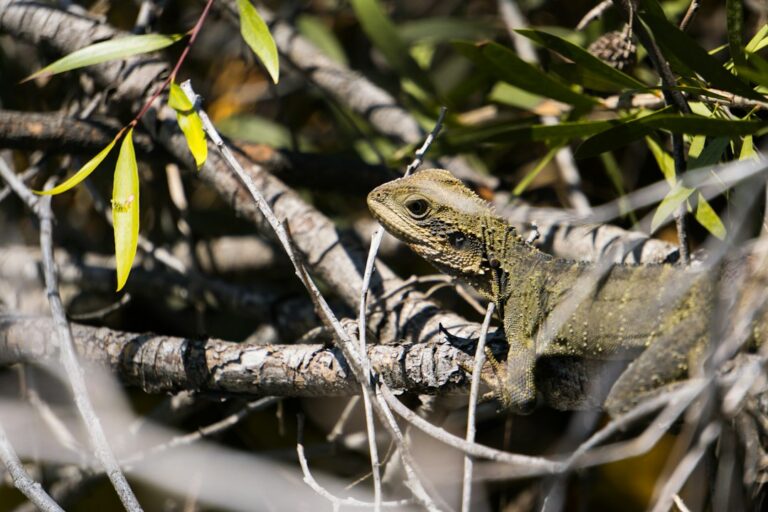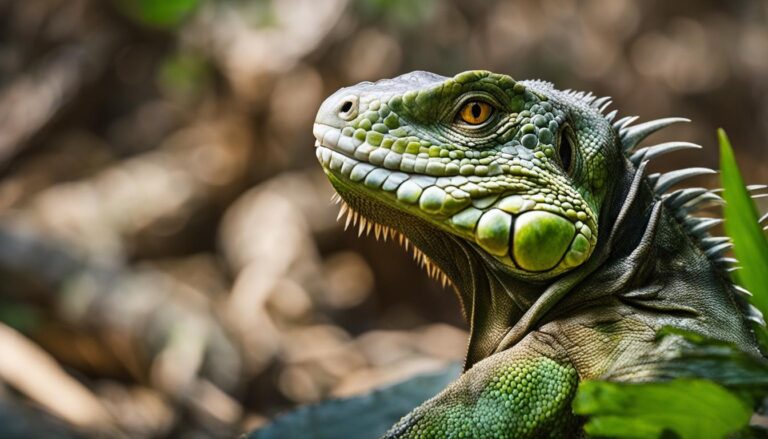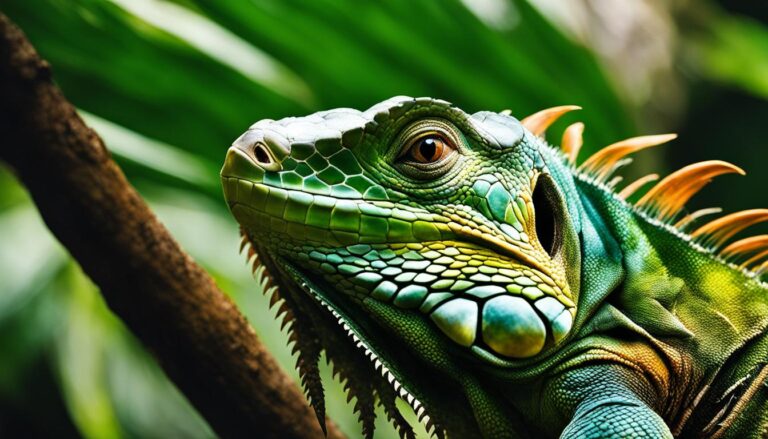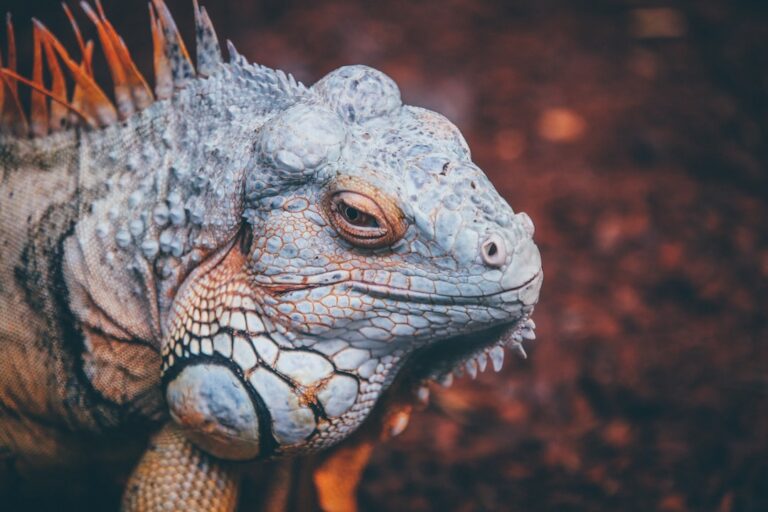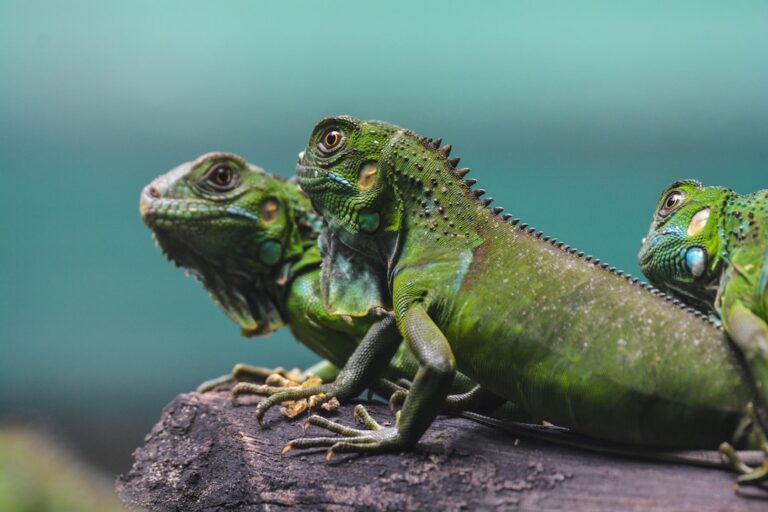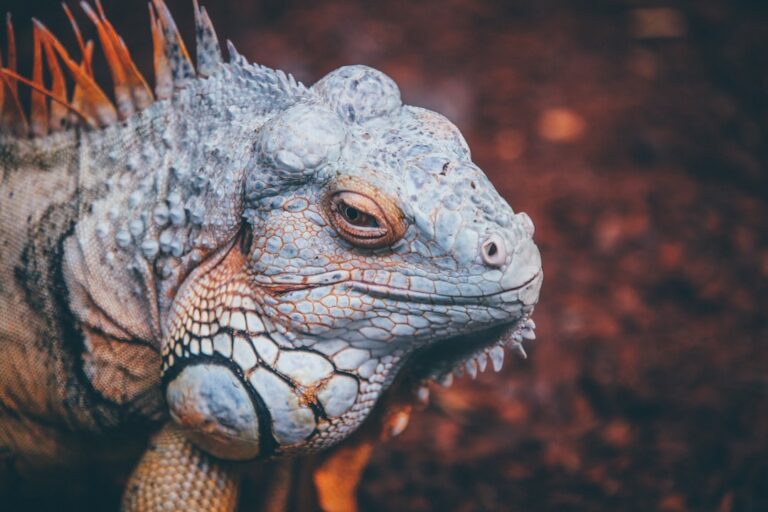Are Iguanas Blind?
Iguanas are fascinating creatures that play an important role in the ecosystem. They are herbivorous reptiles that can be found in tropical and subtropical regions around the world. Iguanas are known for their unique appearance, with their long tails, spiky crests, and vibrant colors. However, one aspect of iguanas that is often overlooked is their vision.
Understanding iguana vision is crucial for their survival and well-being. Like all animals, iguanas rely on their senses to navigate their environment, find food, and avoid predators. By understanding how iguanas see the world, we can better understand their behavior and provide them with the proper care they need.
Table of Contents
Anatomy of Iguana Eyes: How They See the World
The eyes of an iguana are quite different from human eyes. Iguanas have large, round eyes that are positioned on the sides of their head. This allows them to have a wide field of view, which is important for detecting predators and other potential threats.
The structure of an iguana’s eye is also unique. They have a transparent scale called a spectacle that covers and protects their eyes. This spectacle acts as a shield against debris and helps to keep the eyes moist.
In terms of function, iguana eyes are similar to human eyes in some ways. They have a cornea, iris, lens, and retina, just like humans do. However, there are some key differences. For example, iguanas have a tapetum lucidum, which is a reflective layer behind the retina that enhances their ability to see in low light conditions.
Visual Acuity in Iguanas: Can They See Detail?
Visual acuity refers to an animal’s ability to see fine detail. It is typically measured by determining the smallest object that an animal can see at a certain distance. In humans, visual acuity is measured using the Snellen chart, which consists of letters of varying sizes.
Research on iguana visual acuity is limited, but studies have shown that they have relatively good vision. They are able to see fine details and can even recognize familiar individuals from a distance. This is important for their survival, as it allows them to identify potential threats and find food.
Color Perception in Iguanas: Are They Colorblind?
Color perception refers to an animal’s ability to perceive and distinguish different colors. In humans, color perception is made possible by specialized cells in the retina called cones. These cones are sensitive to different wavelengths of light and allow us to see a wide range of colors.
Research on iguana color perception suggests that they are not completely colorblind, but their ability to see colors is limited compared to humans. Iguanas have fewer cones in their eyes than humans do, which means they may not be able to see the full spectrum of colors. However, they are still able to perceive some colors, particularly those in the green and blue range.
Night Vision in Iguanas: How Well Can They See in the Dark?
Night vision refers to an animal’s ability to see in low light conditions. It is made possible by the presence of a tapetum lucidum, which reflects light back through the retina and enhances sensitivity to dim light.
Research on iguana night vision is limited, but studies have shown that they have relatively good night vision compared to other reptiles. Their tapetum lucidum allows them to see in low light conditions and helps them detect movement and potential threats.
Eye Diseases in Iguanas: Common Problems and Treatments
Like all animals, iguanas are susceptible to eye diseases. Some common eye diseases in iguanas include conjunctivitis, corneal ulcers, and cataracts. These conditions can cause discomfort and vision problems for the iguana.
Treatment options for eye diseases in iguanas vary depending on the specific condition. In some cases, medication may be prescribed to reduce inflammation or fight off infection. In more severe cases, surgery may be necessary to remove cataracts or repair damage to the eye.
Prevention is key when it comes to eye diseases in iguanas. Providing a clean and hygienic environment, avoiding exposure to irritants, and providing a balanced diet can help prevent eye diseases in iguanas.
Environmental Factors that Affect Iguana Vision
There are several environmental factors that can impact iguana vision. Lighting is one of the most important factors, as it affects an iguana’s ability to see and navigate their environment. Iguanas require access to both natural sunlight and artificial UVB lighting to maintain proper vision.
Temperature is another important factor that can impact iguana vision. Iguanas are ectothermic animals, which means they rely on external sources of heat to regulate their body temperature. If an iguana becomes too cold, their metabolism slows down and their vision may be affected.
Providing proper environmental conditions for iguanas is crucial for their overall health and well-being. This includes providing a suitable habitat with access to natural sunlight or UVB lighting, as well as maintaining proper temperature and humidity levels.
Behavioral Responses to Visual Stimuli in Iguanas
Iguanas have a variety of behavioral responses to visual stimuli. They are highly visual animals and rely on their vision to communicate with others, find food, and avoid predators.
One common behavioral response in iguanas is head bobbing. This behavior is often seen in male iguanas during territorial disputes or courtship displays. By bobbing their head up and down, male iguanas are able to communicate their intentions and establish dominance.
Another common behavioral response in iguanas is tail whipping. This behavior is often seen when an iguana feels threatened or cornered. By whipping their tail, iguanas are able to ward off potential predators and protect themselves.
Vision and Communication in Iguanas: How They Interact with Others
Iguanas use their vision to communicate with each other in a variety of ways. One common form of visual communication in iguanas is color display. Male iguanas, in particular, are known for their vibrant colors, which they use to attract mates and establish dominance.
Iguanas also use body language to communicate with each other. For example, a submissive iguana may flatten its body and tuck its tail, while a dominant iguana may puff up its body and extend its dewlap.
Visual communication is an important aspect of iguana behavior and plays a crucial role in their social interactions. By understanding how iguanas use vision to communicate, we can better understand their behavior and provide them with the proper care they need.
The Fascinating World of Iguana Vision
In conclusion, understanding the vision of iguanas is crucial for their survival and well-being. By understanding how they see the world, we can better understand their behavior and provide them with the proper care they need.
Iguanas have unique eye anatomy that allows them to have a wide field of view and see fine details. While they may not see colors as vividly as humans do, they are still able to perceive some colors. They also have relatively good night vision, which allows them to see in low light conditions.
Environmental factors such as lighting and temperature can impact iguana vision, so it is important to provide them with the proper environmental conditions. Additionally, understanding how iguanas use vision to communicate with each other can help us better understand their behavior and provide them with the proper care they need.
Overall, the world of iguana vision is a fascinating one. By delving into the intricacies of their eyes and how they perceive the world, we can gain a deeper appreciation for these incredible creatures and ensure their well-being and survival.
If you’re curious about the behavior of iguanas, you may also be interested in learning about their sleeping habits. Check out this fascinating article on where iguanas sleep. It explores the various places these reptiles choose to rest and provides insights into their natural habitat and behavior. Discover the surprising locations iguanas prefer for a good night’s sleep!


